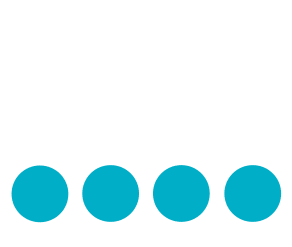Unlocking the Secrets: 7 Common Heart-Related Issues and Ways to Improve Them
Posted on 03 Jun, 2023

According to a study by the Indian Council of Medical Research and Registrar General of India, India accounts for about 60 percent of the world's heart disease.
In fact, India is one of the countries with the highest number of deaths related to cardiovascular disease. Heart disease can affect anyone, including children, adults, and seniors, although it is more common in adults. Your heart is responsible for pumping blood throughout your body, so any malfunction or obstruction can have deadly consequences. Heart disease can be very serious but with timely diagnosis and taking preventive measures, episodes of heart attacks can be avoided. In this post, we will discuss the 7 major heart diseases, their symptoms, diagnosis and preventive measures in detail. We have also added some simple tips for a healthy heart towards the end, so be sure to stick around until the end!
Types of cardiovascular disease
1. Coronary artery disease
Younger generation of Indians, have a higher risk of developing coronary artery disease. Indian youth are 12-16% more likely to develop CAD than other ethnic groups worldwide.
Blood is transported to and from the heart through the arteries and veins. The arteries in and around the heart are called coronary arteries, which are about 3-4 millimeters in diameter. When bad cholesterol builds up in the arteries, it reduces the diameter of the artery, causing disruptions in blood circulation.
This accumulation of cholesterol, calcium deposits and other fatty substances is called plaque, and the condition is called atherosclerosis. The plaque can burst, leading to a blood clot in some cases.
If not treated in time, CHD can attack the heart muscles and lead to heart failure.
Who is at risk?
- Because the buildup of cholesterol is one of the main causes of CAD, people with high cholesterol levels are at higher risk of developing CAD.
- Anyone who is overweight, leads an inactive lifestyle and smokes tobacco is likely to develop CAD at some point.
- People who have a family history of CAD before age 50
Common symptoms
Most people find out they have coronary heart disease when they have their first heart attack. Some common known symptoms of a heart attack are:
- Chest pain
- Angina (lack of oxygen leading to chest pain)
- Nausea
- Fatigue
- Difficulty breathing
Diagnosis
To determine if you have CAD, a CT coronary angiogram may be performed to assess calcium deposits and blockages in the artery.
You may also have a cardiac catheterization, in which a thin, flexible tube is inserted into the artery to examine the inside of the arteries for blockages.
Treatments
Once the situation is under control, you will be advised to establish good habits, such as daily exercise, abstaining from tobacco and eating a balanced diet. You may also be advised to take omega-3 supplements, which raise levels of good cholesterol and lower levels of bad cholesterol.
Commonly recommended medications include cholesterol-lowering agents, aspirin and calcium channel blockers.
If your condition requires surgery, you may need to undergo angioplasty and stenting. In this procedure, a tiny balloon is inflated in your artery to open clogged arteries and allow healthy blood flow.
2. Congenital heart disease
Any heart condition that has been present since birth is called congenital heart disease. This includes holes in the heart, narrowing of the pulmonary valves and an underdeveloped heart.
Who is at risk?
Babies born with Down syndrome develop differently, so it's possible they have certain heart conditions. In addition, most babies with congenital heart disease have mothers:
- Who had certain infections during pregnancy
- Who took certain medications during pregnancy, such as statins.
- Who consumed alcohol or smoked during pregnancy
- Who had uncontrolled type 1 and type 2 diabetes
- Who had a family history of congenital heart disease
Common symptoms
- Rapid breathing and fast heartbeat
- Rapid breathing and exhaustion while nursing the baby
- Inflammation of the eyes, stomach, or legs
- Severe fatigue and tiredness
- Cyanosis (blue coloration of lips and skin)
Diagnosis
The diagnosis is made either before or after birth. If congenital heart disease is suspected on ultrasound, echocardiography is performed to confirm the condition.
If the baby shows symptoms of heart disease after birth, they will be checked during the baby's general examination.
Sometimes there are no symptoms for months or years. If you notice any of the above symptoms make sure you get the disease diagnosed.
Treatments
Treatments for congenital heart defects depend on the type of condition. If it is a small hole, it will most likely recover on its own. Complicated problems, on the other hand, may require medical intervention or even surgery.
According to one report, higher maternal folic acid status protects against adverse birth outcomes such as congenital heart abnormalities, low birth weight and premature birth. Pregnant women can try supplementing B12 and folate to promote the healthy growth of their baby.
3. High blood pressure
Blood pressure is the force with which the heart pumps blood out of the heart chambers. Our blood pressure varies depending on how much oxygen is needed. For example, it rises during physical activity and drops back to normal levels when the body is at rest. It is normal for blood pressure to fluctuate according to the body's needs. However, if your blood pressure is consistently high for a long period of time, it can cause the wall of the left ventricle to thicken and increase the risk of heart failure and stroke. In addition, high blood pressure damages blood vessels and can even cause them to burst.
Our blood pressure is measured in two ways. Systolic blood pressure measures the force the heart exerts on the artery walls with each beat, and diastolic blood pressure measures the pressure the heart exerts on the artery walls between beats. 120/80 mmHg is normal blood pressure for a healthy person.
Who is at risk?
- People with elevated blood pressure. This means that their blood pressure is above the normal range, but less than what we would call threatening. A blood pressure of more than 120/80 mm/Hg is considered elevated blood pressure.
- People who are overweight, lead an inactive lifestyle and consume a lot of sugar, salt and fat.
- Being constantly under stress and anxiety
- People who consume too much alcohol and tobacco
- Individuals with a family history of high blood pressure
- People who suffer from diabetes and/or kidney disease
- Individuals who are 65 or more years of age.
Common symptoms
High blood pressure has no specific symptoms. You simply need to measure it regularly. We recommend that all people over 40 years of age measure their blood pressure regularly.
Extremely high blood pressure symptoms may include:
- Very painful headaches
- Nosebleeds
- Chest pain
- Breathing problems
- Blood in the urine
Diagnosis
Diagnosing high blood pressure is relatively simple. BP should be ideally measured on at least two different days or occasions during a day to get your average blood pressure. Your blood pressure is 140/90 mm Hg or higher, chances are that you are suffering from high BP.
Treatments
Your doctor will usually recommend medications to keep your blood pressure under control. In addition to these medications, you should try to make lifestyle changes for better, long-term results. Eat a healthy diet, reduce your intake of sodium (salt), eat foods rich in potassium, exercise at least 30-40 minutes a day, and try to manage your stress. Try to quit smoking and alcohol. You can also take omega tablets and other multivitamins and multiminerals to fill any nutritional gaps.
4. Heart valve disease
Your heart has four valves that, in layman's terms, open and close, to keep the blood flowing in the right direction. There are several types of valve disease, including valve stenosis - narrowing of the valve opening, which reduces the amount of blood that can flow through the valve at one time.
Valve insufficiency - When the valve leaflets do not close completely, allowing blood to flow in the opposite direction.
Valve atresia - Infants with underdeveloped valves are diagnosed with this condition.
You may be diagnosed with these conditions on more than one valve.
Who is at risk?
- People who are 65 or more years of age
- Children of women who have taken certain medications and had infections during pregnancy
- Family history of valvular heart disease
- People with high BP, diabetes and chronic kidney disease
Common symptoms
- Shortness of breath
- Chest pain
- Fatigue and dizziness
- Sudden and rapid weight gain
- Fever
Diagnosis
If the doctor hears an unusual sound and irregular rhythm when listening to the patient's heartbeat with a stethoscope, heart valve disease is suspected. To find out which valve is affected and how, further examination by echocardiography may be needed.
Treatments
Depending on the type of valve disease, you may be recommended certain medications. If the valve needs to be replaced, you will need to undergo surgery.
5. Angina pectoris
Angina pectoris is chest pain caused by an undersupply of oxygen to the heart muscles. It usually occurs when one or more coronary arteries are blocked. It is a clear indicator of coronary artery disease.
Angina is mainly of two types - stable and unstable angina. In stable angina, there is a pattern that can be used to predict when it will occur. The feeling of discomfort is usually the same with each attack. Unstable angina, on the other hand, does not follow a pattern and occurs at rest, and is more dangerous. compared to stable angina.
Who is at risk?
- People with high cholesterol, BP, and diabetes
- People who are overweight
- Men in the age group of 45 or more and women in the age group of 55 or more
- Persons with metabolic syndrome
- Individuals who consume too much alcohol and tobacco
- Family history of angina
Common symptoms
- Chest pain
- Burning sensation in the chest
- Dizziness
- Nausea
- Sweating
- Shortness of breath
Diagnosis
See a doctor if you have chest pain. Doctors may perform a stress test, EKG, chest X-ray, cardiac catheterization, blood test and other diagnostic methods to determine the extent of the problem.
Treatments
Depending on the cause of the angina, the doctor will recommend appropriate treatment. The most common treatments are medications and cardiac procedures to open the blocked arteries. If you have other heart conditions, such as BP, medications may also be given for them.
The best solution for any heart condition is to improve your lifestyle. Consider what you eat, how much you exercise during the day, and how long you sleep. To improve your lifestyle, you can take natural supplements. If you are looking for something specific for angina, you can try a natural vitamin D supplement that reduces the incidence of angina by up to 20%.
6. Cardiac arrhythmias
Arrhythmia refers to an irregular heartbeat. Arrhythmia occurs when your heartbeat is faster or slower than its normal pace. The muscles of your heart expand and contract in response to the electrical signals they receive. Incorrect signals can cause your heart to beat faster (tachycardia) or slower (bradycardia).
Who is at risk?
- People who have one or more episodes of heart attacks
- If you have narrowed heart arteries
- Who has been diagnosed with coronary/heart disease
- Have high blood pressure
- Individuals whose thyroid gland is either hypothyroid or hyperthyroid
- Obstructive sleep apnea, a condition that causes a pause in breathing during sleep
- Certain medications
- use of caffeine, alcohol, and tobacco in excess.
Common symptoms
- Feeling like you have skipped a heartbeat
- Dizziness
- Chest pain or discomfort
- Fatigue
- Palpitations in the chest
Diagnosis
Common cardiac tests such as EKG, stress tests, and cardiac catheterization may be performed.
Treatments
The type and severity of your arrhythmia will determine the course of treatment. Medications, lifestyle changes, invasive therapies and electrical devices to help the heart muscles function properly are some of the treatments used by doctors.
7. Heart failure
Heart failure refers to a condition in which your heart pumping capability is significantly reduced. As a result, less oxygen-rich blood is carried by the heart, leaving you weak, tired, and short of breath.
Who is at risk?
- People with coronary heart disease, diabetes, high blood pressure, valvular heart disease and other heart conditions.
- Consumption of foods high in sodium (salt), sugar and fats
- Inactive lifestyle and obesity
- People who consume too much alcohol and tobacco
Common symptoms
- Breathlessness while performing simple daily tasks
- Difficulty breathing when lying down
- Swelling in feet, ankles and/or abdomen
- constant fatigue
Diagnosis
A series of tests will be done to determine if your heart is failing or if there is another heart problem. These include blood tests, EKGs, echocardiograms, breathing tests and chest X-rays.
Treatments
Heart failure occurs over the long term and cannot be treated, a heart transplant is the only cure. However, many people manage the situation with the right medications, a good lifestyle, and devices such as a cardiac resynchronization device (biventricular pacemaker), which helps the ventricles (the two lower chambers of the heart) pump blood more efficiently.
Simple daily routine that can keep your heart healthy
As we have seen, in most cases, people with poor eating habits, an inactive lifestyle, and poor sleep patterns are the ones who are at higher risk for heart disease. To prevent heart disease, all you need to do is to switch to a healthy lifestyle.
Some basic things you can easily do that will make a big difference are:
- Take a daily balanced diet, with a lot of green vegies. Avoid foods with too much salt, sugar and trans fats.
- Control your alcohol and tobacco consumption. Non-smokers: stay away from second-hand smoke.
- Do endurance exercise of your choice for 30 minutes each day. If running and jogging are too boring for you, you can try swimming, biking, badminton and jumping rope.
- Don't take over-the-counter medications, as Some medications may have side effects that may trigger or elevate heart disease.
- Consider ways to make your day active. In addition to the 30-minute workout, you can incorporate other activities into your day, such as playing with your dog. Discover new hobbies to manage your stress.
- Managing stress can be difficult, but it's necessary to maintain heart health. Talk to a therapist to find out how to maintain your composure and stay in a calm and serene state.
- Control your cholesterol. Trans fats, which increase bad cholesterol in the body, should be avoided.
- Get at least 7-8 hours of sleep. Good sleep will allow your body to heal itself.
- Get your weight under control. Calculate your BMI and make efforts to help you slowly reduce your weight.
- For children, you can start early to keep cholesterol levels in check by making lifestyle and dietary changes. You can also take natural supplements high in B12 and D3 that are specifically designed for children. These supplements contain natural ingredients to support cardiovascular health.
- Finally, get regular checkups, especially after age 40. Check your blood pressure and keep a record of your blood pressure readings to see that you maintain a healthy blood pressure regularly. Consult the doctor if you notice any changes in blood pressure.
Conclusion
Knowledge is the key to preventing any disease. We hope this article has contributed to your knowledge. If you notice any of the above-mentioned symptoms, please consult your doctor. Early diagnosis can prevent the active progression of heart disease.






